Home › Projects › White Book › Silk Metro
Silk Metro
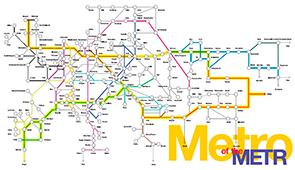
In many respects, Eurasia owes its social, economic and cultural dynamics to the mobility of the Great Silk Road. People used to explore the world, familiarized themselves with new ideas and technology innovations, recovered from illnesses and, on the contrary, found their love owing to this mobility. Caravans brought to neighbors investment, new knowledge and crafts. Nations came to know one another, which manifested itself in arts, legends, borrowings of words and the spread of religions. It is merchants who helped statues of the Buddha find their way to Central Asia and the Muslims of today’s China are descendants of those who lived along the merchandise caravans’ route.
However, the Silk Road linearity was conditional. Of course, one could draw a line through the key cities – stops along Marco Polo’s route from Venice to Beijing. But, virtually, all of these cities were integrated with a great number of other stations and lines. The caravan delivered merchandise to a neighboring city. From there, full with local items and products, they proceeded further together with “merchant passengers.” As a result, the entire METR region was interconnected on the model of modern metro.
The Silk Road Metro shaped the history and political geography of Eurasia. Owing to successful location and sound policy, infrastructurally and otherwise, many villages turned into towns. In their turn, ancient populated areas fell into decay, unless they fit into the Silk Road or failed to conform to a certain level of transportation mobility. This Trans-Eurasia transportation mobility is well described in the stories from the 1001 Nights. It is amazing how safely and quickly the heroes travel, avoiding being caught in a robber's net and queuing in waiting lines at border-crossing points due to the lack of entry permit.
Needless to say, few made it all the way from Europe to the Great Khan’s residence, like Marco Polo. However, internal transportation mobility was so high that merchandise and ideas easily reached their “final destination.” It is the city stations that had a leading role to play in this process under normal conditions. Cities created the environment for development of commerce and crafts. Suffice it to say that the spread of silk industry beyond China was mostly due to the reasonable manpower and tax policies of urban authorities. Simultaneously, cities ensured that travelers and merchants stayed safe. What is more, compliance with the policies was driven by purely pragmatic interests. Indeed, how well a city received caravans and foreigners dictated its presence and significance on the Silk Road map. It was possible to make one-time gains at the expense of an alien, too, but under normal conditions no one would feel like killing the goose that laid the golden eggs.
By the way, nothing but transportation mobility in the region encouraged economic mobility. After all, embassies brought samples of foreign goods in the form of gifts. These were followed by caravans with batches of most popular commodities. For example, horses were transported from Central Asia to China whereas tea and chinaware was supplied from China. As a matter of fact, the Silk Road originated from these business opportunities as part of traveling through several city stations.
In their stories about travels, the nations who lived on the Silk Road referred to mobility as well as distances. It is no coincidence that they spoke about “travel days” when determining how far one city was from another. In the same way, someone who lives in a modern megacity perceives the “distance” between home and work, work and gym, work and their children’s school in terms of transport accessibility. In this regard, it is of little importance whether 10 or 100 kilometers are traveled if the same amount of time is spent.
Despite speed differences, the Silk Road and “urbanistic metro” use the same fundamental principle: making available as many development opportunities as possible. From this standpoint, metro of the future will also be about social, economic, intellectual “opportunities” but in the framework of a fundamentally new level of transportation mobility. As a result, formal distances can be the same as in the time of the Silk Road but in terms of mobility they become hundreds of times shorter.
Even today, high-speed rail lines allow speeds of more than 350 km/h. Moreover, lines intended for operations at higher speeds are implemented, designed and planned. Accordingly, this offers an opportunity for transition to a totally new standard of living. In this case, cities turn into stations and affect the attendance and popularity of this high-speed metro among passengers. Some will evolve as good places for life; others, as commercial, business or industrial platforms; still others, as educational centers. It is this very concept that we attempted to translate into an interactive map of the future METR region high-speed metro developed in collaboration with IBS, available from: http://mir-initiative.com/silk-metro
The concept or image of metro is already employed in European integration. The Trans-Eurasian Transport Networks (TEN-T) corridors make up 9 lines with capitals and other populated areas as stations. Even today, at average speeds of 300 km/h, people can afford living comfortably in one city, working in another and having dinner in still another. Moreover, one spends the same amount of time traveling a few hundreds of kilometers per day as a suburban resident usually does. For instance, it takes those who live in the suburbs of Paris or London, accounting for about 20% of employed population, an average of 75 minutes to get to work (one-way). In this case, the average distance ranges from 27 to 38 km. High-speed train service allows choosing a place to live at least 250–300 km away from the center due to time-saving. That said, environmental setting, cost of living and living conditions some distance away from the capital, normally, are much better.
High-speed European metro offers new opportunities to city stations earlier treated as peripheral areas. In the 1980s, Lille, France, used to be a declining industrial and coal producing center with high unemployment rate. The city changed after becoming part of high-speed line between London and Paris, London and Brussels. It became the third most important commercial and financial capital of France. Furthermore, Lille became a major tourist attraction: the number of tourists has grown 15-fold to half million people per year.
As in the time of the Silk Road, mobility offers new development opportunities to people and cities. Notably, high-speed link between Turin, Italy, and Lyon, France, is one of the critical European infrastructure projects of the present day. This project is intended to change social mobility not just of the two cities but of the entire line. High-speed rail line already connects Lyon to Paris, which allowed the city to build a downtown area around the rail terminal that occupies more than 5.3 million square meters and employs over 20.000 people. In the future, the line extensions to Milan and Paris are within the same reach for Lyon in terms of time whereas Lyon and Milan are reachable from Turin within one hour by high-speed “metro.”
High-speed metro resolves the problem of overpopulation and extensive development of cities in the form of the new commuter belt developments. In the framework of the current model, bigger cities take population out of smaller ones, thus making them suffer from environmental and traffic overload issues. High-speed metro addresses this problem: people are free to live in any location that is convenient and comfortable to them, knowing that work, school or health care institution are just a few stops from home.
Creation of the METR region metro offers city stations an opportunity to regain any unique profile. It used to be the case in the time of the Silk Road. Consider, for example, the cities specialized in manufacturing certain types of textile fabrics. Specifically, the muslin fabric, that used to be popular in Europe in the late 18th century, gets its name from the Iraqi city Mosul, a starting point for its export to Europe. Today, especially owing to high-speed metro, cities will be able to develop any particular high-tech specialization.
Meanwhile, the largest populated areas will not be the only destination of passenger flows. Smaller city and town stations lying on the line will benefit from creation of special technology environments. IT sector is a simple example of these. A prospective technology park requires high concentration of professionals employed in the same field. In other words, it necessitates creating the right environment for an industry. Obviously, the implementation of a project like that in a big and expensive city is extremely costly. It would be more efficient to develop such projects in places with high living standards and relatively low cost of living, primarily in terms of buying or renting properties. By the way, it is extensive opportunities in terms of real estate that allowed launching a successful environment for the implementation of IT projects within any budget in Silicon Valley. Importantly, this place should boast high accessibility by transport, or else both professionals and investors would be reluctant to travel there. In this regard, Lleida is an illustrative example. It is a city in Spain that managed to attract investment from Microsoft and other high-tech companies. It offered two indisputable benefits: low accommodation costs as compared with big cities and high-speed accessibility by rail, with Barcelona on one side and Madrid on the other.
The past 20–30 years have seen the emergence of the first lines of this new high-speed metro of the METR region. In this regard, Paris and Brussels are very illustrative examples. Earlier people used to fly between the two cities, whereas the emergence of high-speed rail line has changed the situation drastically. Travel by train takes not more than 40 minutes. So, now, if an important exhibition has opened in Paris, one can spend a night in the capital of Belgium and next morning go to France by “metro.”
In the next 15–20 years, high-speed rail lines of the METR region are expected to constitute the new Eurasian metro. Apart from its educational, cultural and social potential, high-speed metro allows modern cities to accomplish a key objective associated with environmental protection. A train traveling at speeds of up to 320 km/h absorbs less than 1 l of fuel per passenger, which is four times smaller than energy consumption rates of cars and seven times smaller versus an aircraft traveling the same distance. As far as air emissions are concerned, in HSL they are several times smaller as compared with aviation. Furthermore, in case of clean energy consumption this measure could be as even 100 times lower.
Cities are in a situation of continuous growth in the number of cars per capita. Obviously, the problem should be addressed by increasing the popularity of public transport against the individual. At average speeds of above 200 km/h, competition with private auto transport would disappear naturally.
Finally, creation of metro in the METR region is a geopolitical initiative, too. The point is that the implementation of this large-scale project will allow making the region both more mobile and safer. Greater transportation mobility would cause increased social mobility as well, thus easing tension among various parts of the region. Lowering of barriers and economic integration would become natural processes, implying simultaneously higher income and wider opportunities for the majority of the region’s population.
Development of regional high-speed metro poses a number of challenges, too. First of all, it is of paramount importance to ensure effective communication between high-speed metro and intra-city transport. In this case, comprehensive integration among diverse providers of transport services is, virtually, unavoidable. Further enhancement of mobility in inter-city service will only aggravate this problem. Urban environment will change, too. A quality breakthrough is likely to necessitate removing stations as physical infrastructure. In this case, link could occur, for example, with employment of mobile platforms at reduced speeds but without a full stop.
Technical and administrative requirements would need unification as well. We cannot think of a metro where passengers are required to either change trains at every stop or present their documents.
In this regard, we face the issue of infrastructure investment, as in the time of the Silk Road. High-speed metro that plays a social role should be based on the logic of aggregate indirect income rather than direct investment income. This entails a whole system of benefits, including a variety of aspects ranging from environmental protection and decline in crime to stress reduction and family time maximization.
Implementation of the metro of the METR region project requires not only financial resources or effective regulations. It mainly necessitates creating a human habitat that would be interested in implementing the project. These people are mayors of the potential Silk Road cities. A constituent meeting of the New Railway Silk Road Cities Forum is scheduled for this week. This habitat is expected to generate the necessary projects, ideas and will for delivering this “unreal objective” of high-speed metro creation in the METR region. But what is today perceived as remote future has every chance to become a habitual norm for the generation of our children.
Sign up for MIR initiative email updates
Sign up to receive monthly notifications about new arctiles published and other events on your email.
Other articles
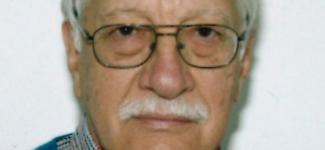 Eugenio Muzio
Eugenio Muzio
Intermobility Strategy for the METR Region
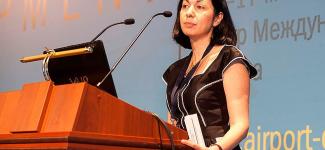 Olga Revzina
Olga Revzina
Legal aspects of international transport related infrastructure projects in the METR Region
 Manuela Carmena
Manuela Carmena
Urban mobility Madrid way
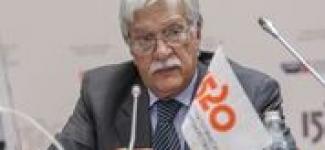 Eugenio Muzio
Eugenio Muzio
Eurasian High-Speed Metro for Freight Transportation
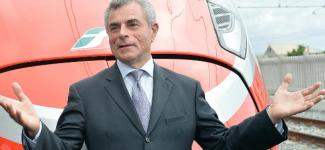 Mauro Moretti
Mauro Moretti
METR region transport systems
 Boris Levin
Boris Levin
